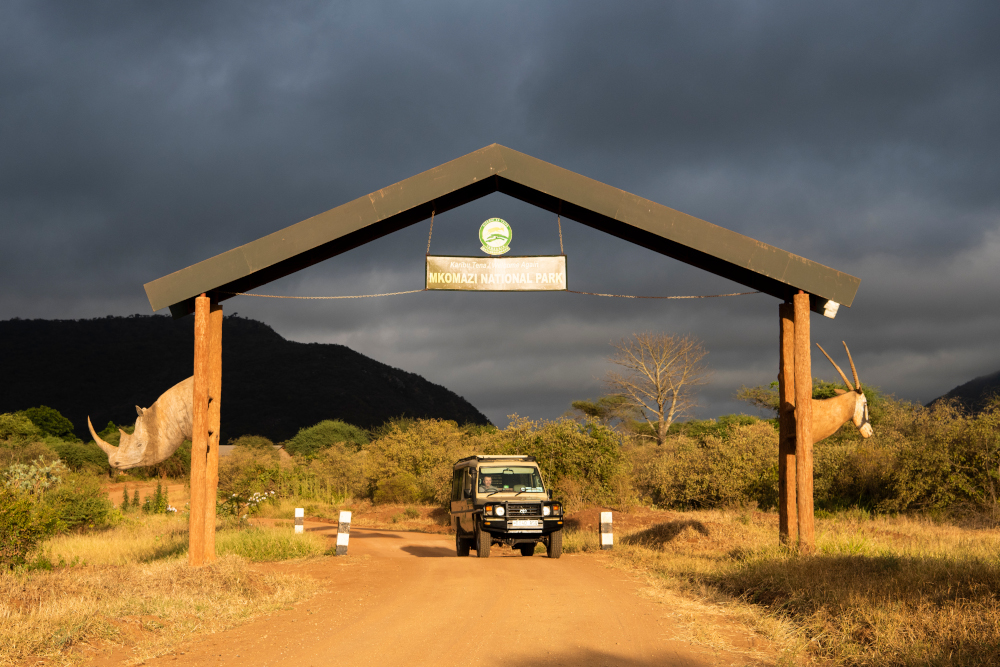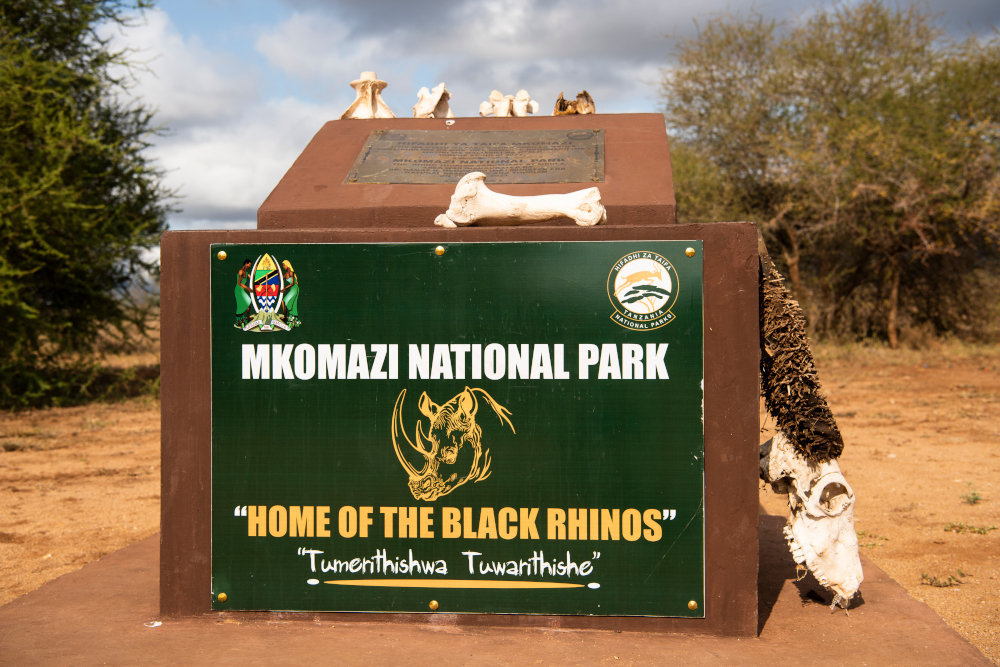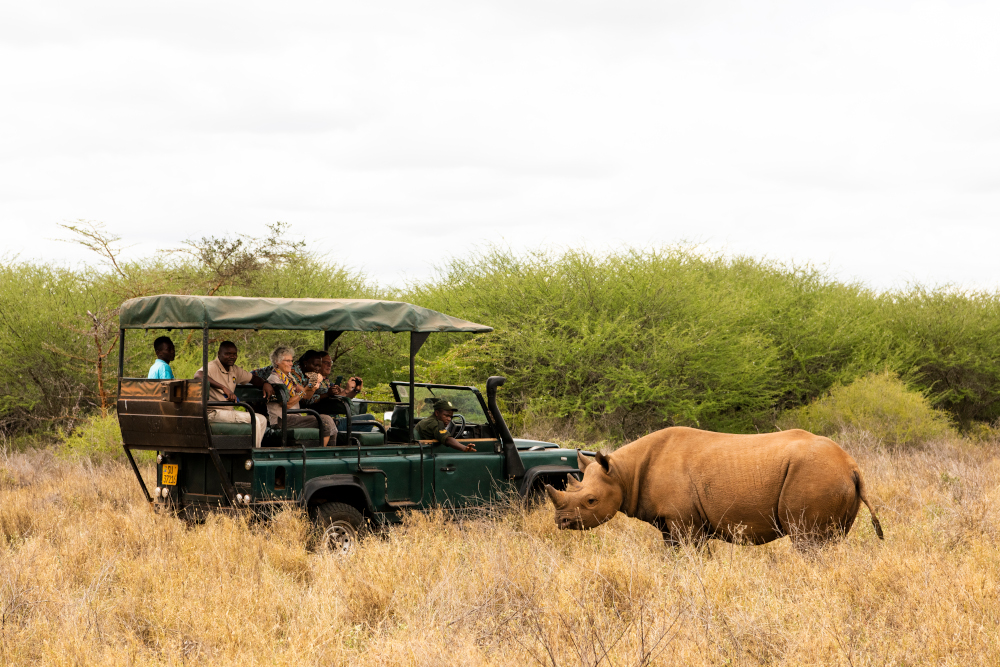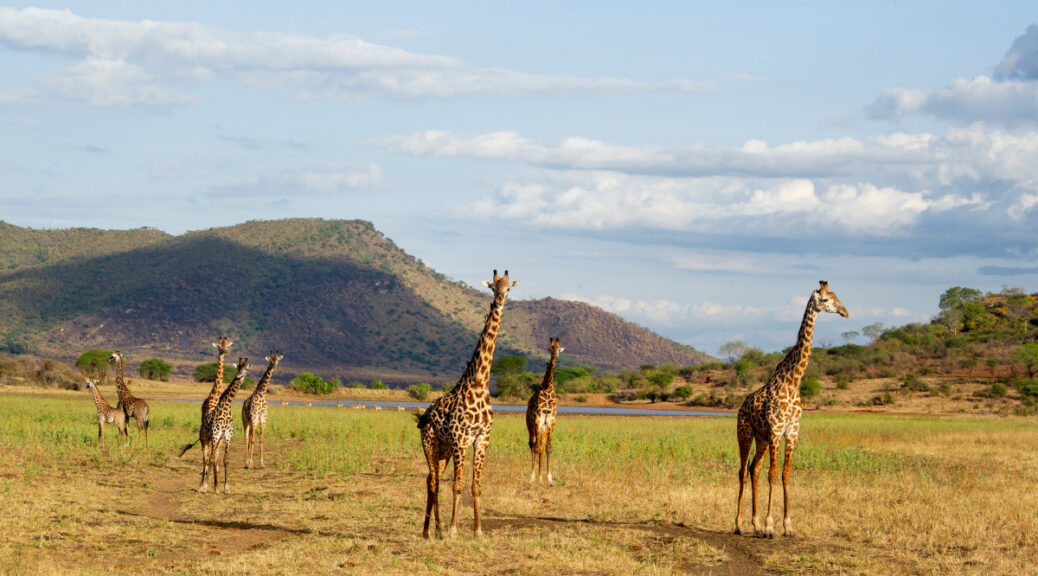Sometimes you don’t need to drive too far off the beaten track to find yourself totally off the beaten track. Sounds paradoxical? Well, northern Tanzania’s underrated Mkomazi National Park is a perfect case in point. By Philip Briggs
Mkomazi National Park in Tanzania could scarcely be more accessible. The main Zange Entrance Gate stands a mere 10 minutes’ drive east of Same (pronounced Sah-may). This substantial town lies on the B1 connecting Dar es Salaam to Moshi and Arusha. Yet the park itself – a 3,234km2 extension of Kenya’s immense Tsavo West National Park – ranks among the most untrammelled and little-visited anywhere in Tanzania. Indeed, over the course of three visits to Mkomazi since it was upgraded from a game reserve to a national park in 2008, I’ve yet to see more than one other tourist vehicle on any given day.
Wildlife is bouncing back
Historically, there are several reasons why Mkomazi is so neglected. Prior to 2008, the park suffered from considerable encroachment and poaching. Even as recently as the mid-2010s, wildlife remained thinly distributed and skittish. For many years, a shortage of tourist development provided a further obstacle to exploring the park. Logistically, it doesn’t help Mkomazi’s case that, coming from the springboard towns of Arusha and Moshi, it lies totally in the opposite direction to the Serengeti, Ngorongoro Crater and Tanzania’s other major safari destinations. Based on our most recent visit in July 2022, however, wildlife populations in Mkomazi are noticeably on the increase.
We saw plenty of giraffe, zebra, eland, Coke’s hartebeest and impala along the main game-viewing circuit between Zange to Dindira Dam. On our afternoon drive, we encountered a solitary male lion on the way to Dindira. Next we saw a large buffalo herd crossing the road on its way to drink. When we returned to the dam early the next morning, we found one of the park’s eight resident lion prides lying in the open. Although they were out of photographic range, they were evidently not perturbed by the sight of a vehicle. For Big Five junkies, Mkomazi is also home to plenty of leopards (though daytime sightings of these furtive big cats are very uncommon). Elephant numbers fluctuate seasonally as herds move around the Greater Tsavo Ecosystem, which supports a total of at least 12,000 individuals.

The park’s endangered animals
Mkomazi is also an important breeding site for black rhino. After becoming extinct there 10 years earlier, these endangered creatures were reintroduced to the park in the 1990s. However, until recently they were confined to a 54km² breeding enclosure that’s off-limits to tourists. This changed in 2021 with the opening of the 16km² Mkomazi Black Rhino Tourist Sanctuary at Mbula, an hour’s drive from Zange Entrance Gate. There are five adult rhinos in this sanctuary, which can be explored on open-sided 4x4s safari vehicles guided by knowledgeable and enthusiastic park rangers. This is a significant development for Mkomazi, because there is nowhere else in Tanzania where these secretive browsers are so easy to see.
Interestingly, Mkomazi’s rhinos all descend from individuals airlifted from the park in 1985 to protect them from the commercial poaching that was then rampant in East Africa. Most of these rhinos were relocated to South Africa to establish an introduced population in Addo Elephant National Park, while others ended up in European zoos. This is genetically significant because it means that Mkomazi’s 30-plus adult black rhinos all belong to the indigenous northern subspecies.

The park is also often spoken of as an important site for the endangered African wild dog. This claim is misleading, as there are no free–ranging wild dogs in Mkomazi. There is just a single captive pack comprising around 20 individuals in a small caged enclosure at Kisima. A visit to the wild dogs is included in the price of a rhino tour, so we did go to see them. But it’s a zoo-like set-up and not an experience we’d particularly recommend.
Special sightings
Ecologically, Mkomazi is a southern extension of the semi-arid savannah ecosystem centred on Kenya’s Tsavo East and Tsavo West national parks. As such, it harbours a trio of dry-country antelope – fringe-eared oryx, lesser kudu and the bizarre stalk-necked gerenuk – uncommon elsewhere in Tanzania. We’ve never had much luck with any of these antelope along the main game circuit between Zange and Dindira, but we did see lesser kudu and gerenuk in the rhino sanctuary. Rangers told us that all three are quite common here, presumably because there are no large predators.
Mkomazi is a fantastic birding destination, with more than 400 species recorded. You can look for several northern dry-country specials: three-streaked tchagra, Shelley’s starling and the extremely localised Friedmann’s lark. The latter was first added to the Tanzania list by a Royal Geographic Society expedition in 1992. It’s the only place in Tanzania where I’ve seen the spectacular vulturine guineafowl, while other conspicuous birds include common ostrich, secretary bird, yellow-throated spurfowl, bare-faced go-away bird, lilac-breasted roller, Taita fiscal, rosy-patched bush-shrike and white-headed buffalo-weaver.
Tips for travellers
It isn’t just wildlife sightings that have improved in Mkomazi. Amenities have too. In addition to two recently opened midrange tented camps, including the attractively rustic and well-priced Mkomazi View Camp, the national park now offers accommodation in the form of a complex of 6 semi-detached bandas. These huts lie immediately outside Zange Gate and come complete with fitted nets, AC, TV, hot shower & balcony. There’s also a pleasant public campsite with a clean ablution block and dining boma just inside the gate.

The main road circuit that connects Zange Gate, Dindira Dam and Mbula Rhino Sanctuary is in reasonable shape. This should be manageable in most vehicles in the dry season, but high-clearance and/or 4×4 will definitely be an advantage. Very few people head to the eastern two-thirds of the park, which is totally undeveloped for tourism. However, this is reputedly the best area for dry-country antelope, so it could be an interesting area to explore. Make sure you’re self-sufficient and have a solid 4×4.
Mkomazi isn’t for everyone. Rhinos aside, it doesn’t compare to the likes of Serengeti or Ngorongoro when it comes to wildlife densities and near-guaranteed Big Five sightings. But it is a very beautiful park, with the Pare Mountains rising on the southern horizon and Kilimanjaro’s snow-capped peak often visible in the distance. The park has much to offer anyone who wants to escape the tourist treadmill. It’s definitely worth considering as a detour by overlanders self-driving between Dar es Salaam and Arusha.
Good to know
All fees attract a charge of 18% VAT. The entrance fee for foreigners is US$30pp + 18% VAT per 24 hours. Guided 4x4s safaris into Mkomazi Black Rhino Tourist Sanctuary at Mbula cost US$30pp + 18% VAT. Overnight fees are US$30pp to camp or US$35pp to stay in a park banda, both + 18% VAT. A more affordable option outside the park is the thoroughly agreeable Elephant Motel, which stands in green gardens on the outskirts of Same.
For more information about Mkomazi park bandas and the campsite, visit tanzaniaparks.go.tz or call +255 624 333 888. For Mkomazi View, email info@africanview.co.tz.

